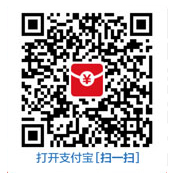The origin of dollar
The origin of the almighty1 dollar is in what is now the Czech Republic. In 1519, a silver mine near the town of Joachimstal began minting a silver coin called, unimaginatively, the Joachimstaler. The coin, which was circulated widely, became better known by its clipped form, the taler. In Dutch and Low German, the initial consonant2 softened3 to become daler. English adopted this form, eventually changing its spelling to the modern dollar.
In the American colonies, there was no standard currency. The coin that was in widest use was the Spanish Peso, known also as Pieces of Eight because it could be pided into eight pie-like pieces. The English colonists4 informally assigned the name dollar to this coin. In 1785, when the Continental5 Congress established U.S. currency, they adopted dollar as name for the standard unit of currency, at the suggestion of Governeur Morris and Thomas Jefferson, because the term was widely known and was not associated with any form of official English currency.
The origin of the $ sign has several folkloric7 stories attached. One says that Thomas Jefferson invented it, perhaps as a sort of monogram8 for TS. Jefferson was the first to use the symbol in relation to the U.S. dollar, but this story is fanciful. Another says that originally it was U superimposed over an S, for U.S. of course. Eventually the base of the U eroded9 due to poor printing technology, leaving an S with two lines through it. Another says that it is a variant10 of a figure eight that appeared on the Spanish Peso, standing11 for the pieces of eight. This last is close to the truth, but not quite there.
The Spanish royal family used on its escutcheon, two pillars crossed by an unfurled banner reading Plus Ultra. This symbol appeared on the Peso, and looked much like the modern $ sign. It was adopted as a symbol for the Peso in the American colonies, and was transferred to the dollar.
The U.S. was the first nation to adopt an official currency named the dollar. In 1797, the Bank of England began minting dollar coins as bank-issued currency. Other nations that have adopted the name dollar for their currency have done so in emulation12 of either the U.S. or this short-lived Bank of England practice.
至高无上的USD起来自于如今的捷克共和国。1519年,坐落于Joachimstal镇 附近的一座银矿开始制造银币,银币的名字,不假思索的起名字为Joachimster,这种银币广泛流通,后来名字简化为taler,变的愈加有名。在荷兰及德国南方,taler一词开头的辅音常常软化而变成 daler。英语使用了这一形式,最后其拼写为目前的 dollar一词的形式。
在美国殖民地,以前没标准的货币。最广泛用的是西班牙比索,也称之为 八片币,由于它可以分成包子状的八块。英国殖民主义者把这种钱币非正式的称为dollar。1785年,美洲殖民地大会确定了美国货币,他们依据毛里求斯总督和托马斯.杰弗逊的建议把dollar 作为标准货币单位名字。由于dollar 一词已广为人知,它与任何形式的英国官方货币无关。(杰弗逊还命名了硬币角(disme), 起来自于法语dixieme, 作为一USD的十分之一,发音为deem, 最后演变为dime)
USD的符号$的由来与好几种民间传闻有关。一种说法是:它是由托马斯? 杰弗逊创造的,为TS交织字母的标记。杰弗逊初次将这符号与USD联系起来,但这种说法未免有点荒诞。另一种说法是:原来是字母U加在字母S上,当然代表U.S.(美国)。后来因为印刷技术差的原故,U的底部未印出来,结果就剩下两条竖杠在字母S上。还有一种说法是,它是数字8的变体,8过去出目前西班牙比索上,代表八片币。这最后一种说法与事实相近,但也不可以让人信服。
西班牙皇室将$这一符号用在饰有纹章的盾牌上,两个柱子(代表大力神在直布罗陀和摩洛哥的两根柱子)与一面招展的旗帜相交,有超级的意思。这一符号出目前比索上,非常像今天$这一符号。在美洲殖民地,它被用来作为比索的符号,后来转用来代表USD。
美国是第一个将官方货币命名为元的国家。1797年,英国银行开始铸造面值为元的硬币,作为银行发行的货币。其他国家相继使用元作为他们的货币,他们不是模仿美国就是模仿寿命不长的英国银行的做法。



